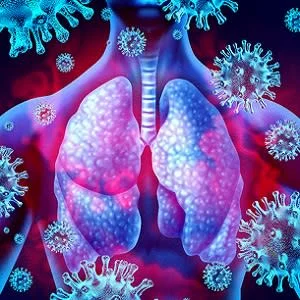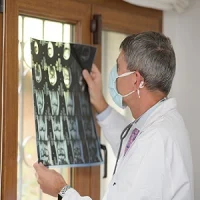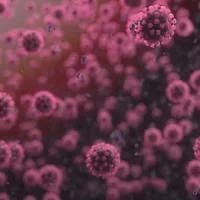The primary cause of death with COVID-19 is progressive respiratory failure. However, despite the widespread infection rates associated with COVID, very little is known about the pathophysiology of the disease. What clinicians do know is that the pathological features resemble acute respiratory distress syndrome (ARDS) and progressive hypoxia. But the underlying molecular and biochemical alterations caused by the virus still remain unclear.
In this study, pathologists examined seven lungs from patients who died with confirmed COVID-19 (2 females, five males, ages 68-80 years). They then compared these lungs from 7 patients who died from acute respiratory distress syndrome secondary to influenza A (H1N1) infection during the 2009 pandemic (2 females, five males, ages 55-62). The infected lungs were then compared to 10 age-matched uninfected control lungs. The lungs were evaluated through scanning electron microscopy, seven colors immunohistochemical analysis, corrosion casting, micro-computed tomographic imaging, and direct multiplexed measurement of gene expression.
Results
The researchers observed that in patients with COVID-19 or acute respiratory failure, the histopathological features in the periphery of the lung revealed diffuse alveolar damage with significant perivascular T cell invasion. The lungs from COVID-19 patients also showed distinctive vascular pathological changes that included severe endothelial injury, disrupted cell membranes, and the presence of an intracellular virus. Histological evaluation of the lung vasculature in patients with COVID-19 revealed diffuse thrombosis with microangiopathy.
More significant was the fact that COVID patients had a marked increase in alveolar capillary microthrombi compared to patients with H1N1. Also significant was that in COVID patients, the amount of new vessel formation (via a mechanism of intussusceptive angiogenesis) was nearly three-fold higher than in the lungs from patients with H1N1.
Conclusion
This very small study shows that COVID-19 patients have distinct pulmonary pathophysiology when compared to patients with H1N1. Based on these findings, it appears that hypoxia is common in COVID patients and may be linked to the greater intensity of microthrombosis and endothelialitis in the alveolar cells. This may also be a contributing factor for increased development of intussusceptive angiogenesis. However, whether these findings are universal in all COVID-19 patients still needs to be confirmed. More autopsy studies from COVID-19 patients are required to determine if these changes are constant.
Source: NEJM
Image Credit: iStock
References:
Ackermann M et al. (2020) Pulmonary Vascular Endothelialitis, Thrombosis, and Angiogenesis in Covid-19. NEJM. DOI: 10.1056/NEJMoa2015432
Latest Articles
Influenza, hypoxia, ARDS, COVID-19, respiratory disorder
Pulmonary Pathobiology of COVID-19










